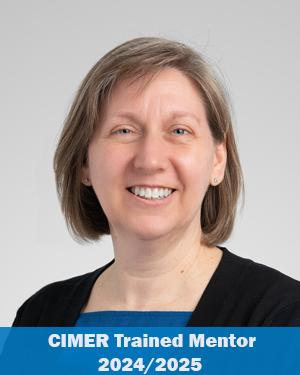Research News

Cleveland Clinic researchers have found for the first time that a drug called PALA (N-phosphonacetyl-L-aspartate) promotes the death of antibiotic-resistant bacteria in skin wounds, without the use of antibiotics. Applied as a topical lotion, the compound enhanced natural immune responses and improved the clearance of resistant bacteria in human skin.
The research team, led by Christine McDonald, PhD, previously discovered that a protein called NOD2 activates antimicrobial peptides—tiny proteins that are part of the body's arsenal of natural defenses against pathogens. They hypothesized that turning up the activity of NOD2 might facilitate pathogen defense, particularly in the skin, which is the body's primary barrier against infection.
While NOD2 is an attractive target, it acts mainly as a facilitator of immune responses, rather than having a distinct physiological activity of its own. This has made it difficult for researchers to modify its actions in the laboratory. In the new study, published in Scientific Reports, Dr. McDonald and her team discovered for the first time that NOD2 activity in the skin is controlled by an enzyme that does in fact have a targetable activity—a protein called CAD.
The researchers found that CAD negatively regulates NOD2 and, therefore, set out to block CAD to turn up NOD2. To show that blocking CAD could enhance NOD2's antimicrobial activity, they used an existing drug called PALA, which is known to turn off CAD. PALA is an early chemotherapy drug that is no longer in use.
Using PALA suspended in a lotion, the team introduced wounds in human skin tissue samples and infected them with three bacterial species, methicillin-resistant Staphylococcus aureus (MRSA), Pseudomonas aeruginosa, and Acinetobacter baumannii. They then applied the medicated lotion to the skin for various lengths of time. They found that the skin samples that received PALA not only had higher levels of two naturally occurring antimicrobial peptides, but also had fewer surviving bacteria from all three species. Furthermore, they showed that PALA was only toxic to the bacteria, not to the healthy human cells.
The three bacterial species tested are considered opportunistic pathogens that are extremely difficult to kill and are especially dangerous to immunocompromised patients and patients undergoing surgery or long hospital stays. With the current public health crisis surrounding "superbugs" and antibiotic resistance, there is a crucial need for alternatives to antibiotics for these pathogens.
"This is an exciting discovery from a scientific standpoint because we have found a way to turn up the activity of NOD2, which is notoriously difficult to manipulate," Dr. McDonald said. "In addition, the bacterial species we studied are also major healthcare problems, so we are excited about the prospect of having an alternative or adjunct treatment not too far in the future."
Further studies are needed to better understand how PALA could be safely used in humans, but the study shows great promise for developing an alternative infection prevention strategy that does not contribute to antibiotic resistance. In addition to the traditional hospital setting, a cost-effective topical lotion to prevent infection could be beneficial for military personnel, veterinary clinics, and even schools where sports injuries and "superbug" infections are becoming increasingly common.
Dr. McDonald is an associate staff member of Cleveland Clinic's Lerner Research Institute Department of Inflammation and Immunity. Co-first authors on the publication are Samreen Jatana, PhD, and Craig Homer, MS.
The study was funded by the Department of Defense through the Peer Reviewed Medical Research Program (PR150299), pilot funding from the STERIS Corporation, and the generosity of Guy & Mary Jo McDonald.
Photo: Human skin samples stained for human beta defensin 2 (HBD2; in green). Left image: Human skin samples treated without PALA. Right image: Human skin samples treated with 2% PALA.
Featured Experts
News Category
Related News
Research areas
Want To Support Ground-Breaking Research at Cleveland Clinic?
Discover how you can help Cleveland Clinic save lives and continue to lead the transformation of healthcare.
Give to Cleveland Clinic